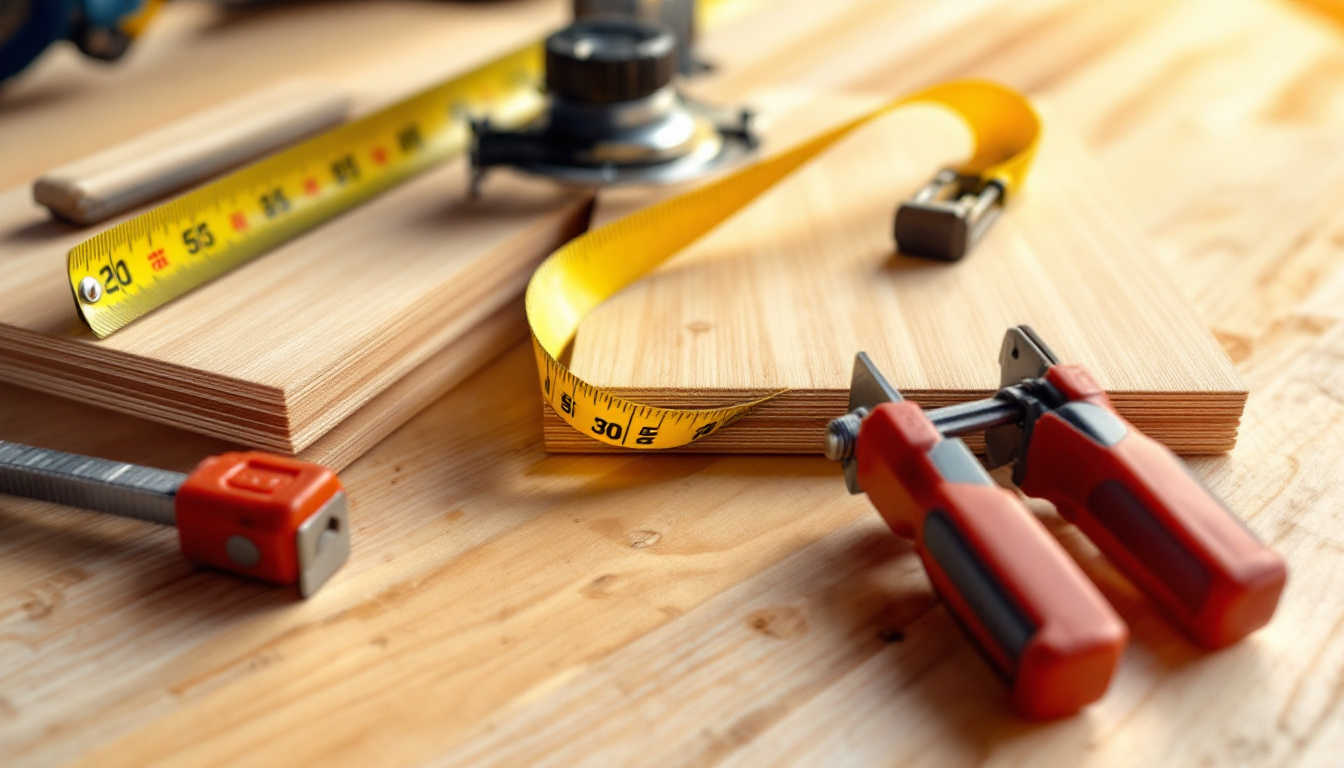Understanding the Basics of Formwork Plywood
Formwork plywood plays a crucial role in the construction industry, acting as a temporary structure used to support concrete until it sets. Its importance cannot be overstated, as it provides the necessary support needed during the construction of various structures, including buildings, bridges, and tunnels. Understanding the fundamentals of formwork plywood is essential for achieving successful results in any concrete project.
What is Formwork Plywood and Why is it Important?
Formwork plywood is specifically designed to withstand the pressures of freshly poured concrete. Unlike standard plywood, which may warp or degrade under such conditions, formwork plywood is treated to be both durable and waterproof. Its robust characteristics allow it to maintain shape and functionality, reducing the risk of structural failure during the curing process.
The significance of formwork plywood extends beyond mere functionality; it plays a vital role in ensuring the integrity of the finished structure. Proper use of high-quality formwork plywood can lead to smoother surfaces and more accurate dimensions, which are critical in modern construction. Moreover, the choice of formwork plywood can influence the overall efficiency of a project. By selecting the right type, contractors can minimise the need for additional finishing work, thus saving both time and costs associated with labour and materials.
Different Types of Formwork Plywood
Several types of formwork plywood are available, each suited for specific applications. Common varieties include marine plywood, phenolic-faced plywood, and birch plywood. Marine plywood, for instance, is highly resistant to moisture, making it ideal for projects exposed to harsh weather conditions. On the other hand, phenolic-faced plywood boasts a smooth surface finish that is excellent for achieving superior concrete finishes.
Another notable type is birch plywood, known for its strength-to-weight ratio. It is often chosen for its versatility and can be used in both vertical and horizontal applications. Additionally, there are specialised options such as steel-faced plywood, which combines the durability of steel with the lightweight properties of plywood, making it suitable for heavy-duty applications. Each type of formwork plywood not only caters to different environmental conditions but also aligns with various construction techniques, allowing builders to optimise their resources effectively.
Key Characteristics of High-Quality Formwork Plywood
When selecting formwork plywood, several key characteristics must be considered. The first is the thickness of the plywood, which directly impacts its load-bearing capacity. Generally, thicker plywood can support heavier loads but may also add unnecessary weight to the overall formwork system.
Additionally, high-quality formwork plywood should exhibit resistance to water and excessive moisture. This is essential to prevent delamination and a reduction in structural integrity over time. Other characteristics to look for include a smooth surface finish, dimensional stability, and the level of adhesion used in the bonding process, as this can greatly affect the plywood’s performance. Furthermore, the sourcing of the plywood is crucial; sustainably sourced materials not only contribute to environmental conservation but also ensure that the plywood is of a high standard, free from defects that could compromise its effectiveness in construction. As the industry moves towards more eco-friendly practices, the demand for responsibly sourced formwork plywood is likely to increase, making it a significant consideration for modern builders and contractors.
Essential Tools and Materials for Working with Formwork Plywood
Successfully working with formwork plywood requires a range of tools and materials. Having these essential items on hand can significantly impact the efficiency and quality of your construction project. Understanding each tool’s purpose and how to use them properly is crucial for achieving the best results.
Necessary Tools for Handling Formwork Plywood
Some of the essential tools include a circular saw for cutting the plywood to size, a framing square for ensuring right angles during assembly, and a level for checking the flushness of the formwork. Other indispensable items include clamps or screws for securing the plywood and a utility knife for making precise cuts.
In addition to these tools, using a workbench can greatly aid in managing larger sheets of plywood. This provides a stable surface for cutting and assembling while maintaining a safe working environment. Furthermore, investing in a set of sawhorses can also prove beneficial, as they allow for better support and stability when working with oversized materials. This not only helps in achieving accurate cuts but also reduces the risk of accidents caused by unstable surfaces.
Safety Equipment for Working with Plywood
Safety should always be a priority when working with formwork plywood. Essential personal protective equipment (PPE) includes safety goggles to protect your eyes from sawdust and debris, gloves to safeguard your hands from sharp edges, and ear protection when using power tools.
Moreover, steel-toed boots are advisable when manoeuvring around heavy sheets of plywood. Adopting these safety measures can significantly reduce the risk of injury on-site. Additionally, it is wise to keep a first aid kit readily available and ensure that all workers are familiar with its location and contents. This proactive approach can provide peace of mind and swift assistance in the event of minor injuries, further promoting a culture of safety on the job site.
Additional Materials to Enhance Plywood Durability
To prolong the life of formwork plywood, consider using additional materials such as waterproofing agents, sealants, and edge coatings. Waterproofing agents can be applied to the plywood’s surface to create a barrier against moisture. This is particularly beneficial in rainy climates, where moisture exposure is a concern.
Sealants can fill any gaps in the plywood, which may otherwise allow moisture to penetrate and cause deterioration. Edge coatings, on the other hand, are vital in protecting the vulnerable edges of the plywood from fraying and damage during handling and transportation. In addition to these treatments, it may also be advantageous to use a protective tarp or cover when storing plywood outdoors. This simple measure can shield the material from direct sunlight and rain, further extending its lifespan and maintaining its structural integrity for future projects.
Step-by-Step Guide to Using Formwork Plywood in Construction
Once you have gathered all the necessary tools and materials, it is time to implement them in your construction project. Following a step-by-step guide ensures that each stage of the process is conducted correctly, leading to a successful formwork structure.
Preparing Your Formwork Plywood
The first step involves preparing your plywood for use. This includes checking for any defects or damage that could affect performance. Plywood sheets should be thoroughly clean and free from contaminants such as dirt, oil, or old adhesive before being cut or assembled.
Additionally, if waterproofing or sealing agents are to be applied, this should be done at this stage. Following the manufacturer’s instructions is crucial to ensure the effectiveness of these products.
Cutting and Shaping Your Plywood
Once your plywood is prepared, the next step is cutting and shaping it to fit the specific needs of your project. Using a circular saw, carefully measure and cut the plywood sheets to the required dimensions. Accuracy in this step is critical, as even minor errors can lead to complications during assembly.
Moreover, for more complex shapes or angles, a jigsaw or router can be useful. Marking all cuts beforehand ensures clarity and precision throughout the process.
Assembling Your Formwork Structure
The assembly of your formwork structure is the final, crucial step in utilising formwork plywood effectively. Begin by securing the cut pieces together using your clamps or screws. Remember to check for levelness and adjust as necessary to ensure a sturdy formwork system.
Once assembled, inspect the entire structure for any weak points or deficiencies before pouring concrete. A well-assembled formwork is essential for achieving the desired outcome in your construction project.
Tips for Maintaining and Preserving Your Formwork Plywood
After the construction process, maintaining your formwork plywood is crucial for maximising its lifespan and effectiveness for future projects. Regular maintenance practices can prevent premature deterioration and ensure the panel remains in good condition.
Regular Maintenance Practices for Formwork Plywood
Regular inspections should be conducted to assess any signs of damage or wear. Look for cracks, warping, or delamination and address these issues immediately to prevent further deterioration. Cleaning the plywood after each use is also essential. Clear away any concrete residue, dust, or debris that could affect its performance in future applications.
Storing plywood properly between uses is another critical aspect of maintenance. Keeping it in a dry, covered area can prevent exposure to moisture and UV rays that can cause damage over time.
Effective Methods for Cleaning Formwork Plywood
The cleaning process should be done with care to avoid damaging the surface of the plywood. Use a soft brush or broom to clear away loose debris, followed by a cloth dampened with water and mild detergent to wipe down the surface. Avoid using harsh chemicals, as these can degrade the plywood’s integrity.
For tougher residues, a pressure washer can be used, but care must be taken to avoid excessive pressure that might compromise the plywood’s structure.
Tips for Storing Formwork Plywood to Ensure Longevity
To ensure the longevity of your formwork plywood, store it flat and off the ground. Use supports to prevent bending or warping. Furthermore, cover your plywood sheets with a tarp or plastic sheeting to protect them from moisture and harsh weather conditions.
Maintaining a controlled environment, free from extreme temperatures and humidity, will significantly enhance the durability of your formply, allowing it to serve you well across multiple projects.


